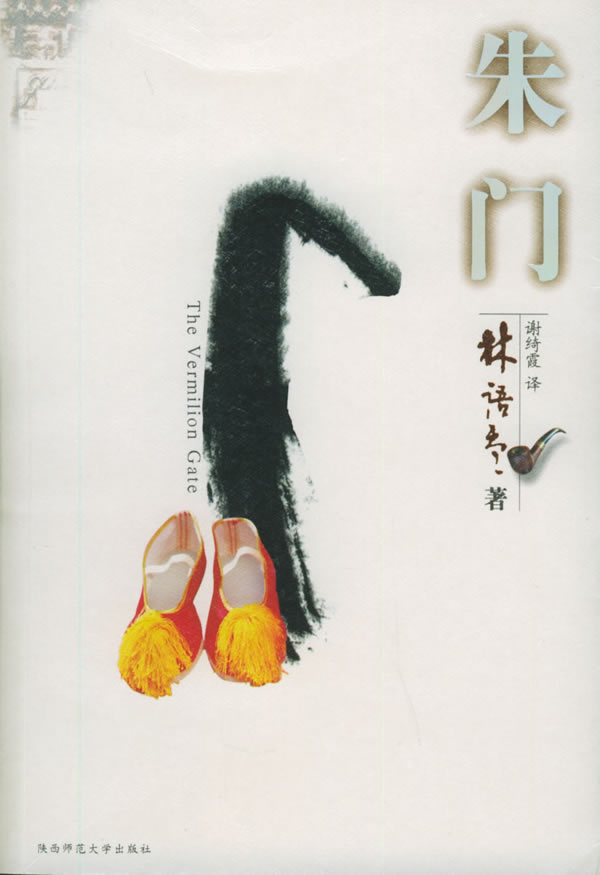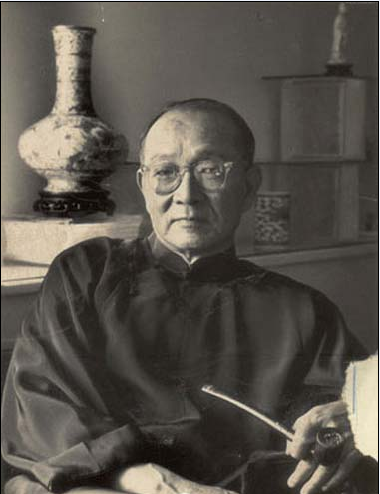Philosophy of happiness: cultural archetypes in Lin Yutang’s novels



Lin Yutang and his books
"Archetype" is an important concept for analyzing characters in novels. By necessity, it encompasses both universal and individual aspects, but often the former results in characters being treated as though they are the embodiment of some social attribute. Although this conception does have its own logic, it is also sometimes misleading. For instance, we can measure the characters in Lin Yutang's novels by analyzing archetypes, but we cannot get an actual sense of their value. In fact, "social life" is only one of many ways by which we may understand and portray the universal elements of an archetype. We should not focus on it to the exclusion of other factors. Cultural features are also a particularly important attribute of a character.
This is apparent as various ethnicities communicate with each other and cultural characters become a central feature of contemporary literature. In Lin Yutang's novels, the images of the characters could be called "cultural archetypes", rather than merely embodying reflections about society or the era.
Conveying culture through character archetypes
The "vagabond" is one of the main character images in the works of Lin Yutang. In the trilogy formed by The Vermilion Gate, Moment in Peking, A Leaf in the Storm particularly, as well as The Red Peony and The Unexpected Island, vagabonds feature heavily. Other non-fiction and narrative works such as The Gay Genius: Life and Times of Su Tungpo also depict vagabonds. As Lin observes, these characters have great wisdom. Happy and cheerful, free and unfettered, they pursue personal happiness and social harmony with zeal, impervious to worldly and utilitarian gains and unconstrained by their own individual beings.
The core of Lin Yutang's cultural concepts can be summarized as "gay science", or the philosophy of happiness. The propensity to pursue happiness is a fundamental part of human nature. There are innumerable opinions, however, on what exactly happiness is, how it should be pursued and what ethical principles we should abide by in our pursuit. In rendering various images of the "vagabond", Lin Yutang attempted to expound his own thinking on these questions. His understanding of the philosophy of happiness is not an individual creation, but rather his comprehensive perspective on both Chinese and foreign culture. This sort of perspective represents a broad synthesis of all iterations of human culture. He focuses first on the three currents of traditional Chinese culture—Confucianism, Taoism and Buddhism. Though he disliked the pessimistic attitude toward life espoused by Taoism and Buddhism, Lin agreed with the rational wisdom with which they appraised the connection between human beings and the world.
Based on this perspective, he examines the inflated self-awareness of modern individuals. At the same time, by absorbing the sensible and humane Confucian worldview, he corrects narrow-minded visions that overlook human nature, and advocates spiritualism. In addition, Western culture is one of the cultural wellsprings from which Lin drew motivation to create the vagabond image. He clearly perceived the shortcomings of modern industrialization and recognized its deleterious effects on humans' ability to pursue happiness, which drove him to turn to the ancient Greek philosopher Epicurus and the German philosopher Friedrich Nietzsche. Both explore the importance of being happy in daily life and how to realize happiness. As Epicurus puts it: "We call pleasure the alpha and omega of a happy life. Pleasure is our first and kindred good; it is the starting point of every choice; and to it we always come back, inasmuch as we make feeling the rule by which to judge of every good thing." His emphasis on the pleasure of sensuality and his interpretation on the moral function of pleasure had a positive influence on Lin.
Nietzsche's unique understanding of happiness is closely connected with modern Atheism. By absorbing Nietzsche's thought and the ideas of related philosophers, Lin learned to venerate personal worldly happiness and avoid the danger to personal happiness by utilitarianism.
Breaking the boundaries of traditional literature
As writers create social archetypes to comment on and urge changes in social life, Lin creates the images of the "vagabond" in order to advocate his cultural ideals. Lin's motive in creating a new cultural archetype is to select, assort, and remold elements of traditional culture. This type of character is significant for three reasons.
First, it constitutes a form of Johann von Goethe's Weltliteratur (world literature), a concept the famous German writer and politician earnestly mentioned in discussing Chinese literature. According to Germanics scholar Jane Brown, "Goethe hoped to enhance tolerance by increased cultural knowledge. By Weltliteratur Goethe understood what we would today call inter-cultural communication, a set of global conversations and interchanges in which the commonalities between different cultures would become ever clearer without, however, erasing the individuality of national differences." In The Vermilion Gate, Moment in Peking, A Leaf in the Storm, he depicts the assimilation of western characters with Confucian, Taoist and Buddhist qualities, respectively. The juxtaposition of world cultures runs throughout The Unexpected Island.
Second, it is indicator of society and the human spirit's evolution. Where social archetypes reflect the contradictions and conflicts in inter-personal relationships and display the state of human society in different stages of development, the cultural archetype reflects the coordination and accord within the human spirit after society has advanced to a certain stage. Third, Lin's creation of the "vagabond" is an example of literary and cultural innovation. In The Unexpected Island, the characters find fault with the current calendar systems they are using, and propose a new system to keep track of time. Many of Lin's other works similarly feature characters that break the boundaries of characterization and image-rendering in traditional literature. Traditional writers tended to focus on imagery concerning social mores, political attitudes and moral stance. Between the lines, Lin's characters transcend national, hierarchical and moral concepts, embodying Lin's vision on the future of human nature.
Xiao Bairong is from the Liberal Arts College of Hunan Normal University.
The Chinese version appeared in Chinese Social Sciences Today, No. 577, March 28, 2014
Translated by Baile
Revised by Charles Horne
